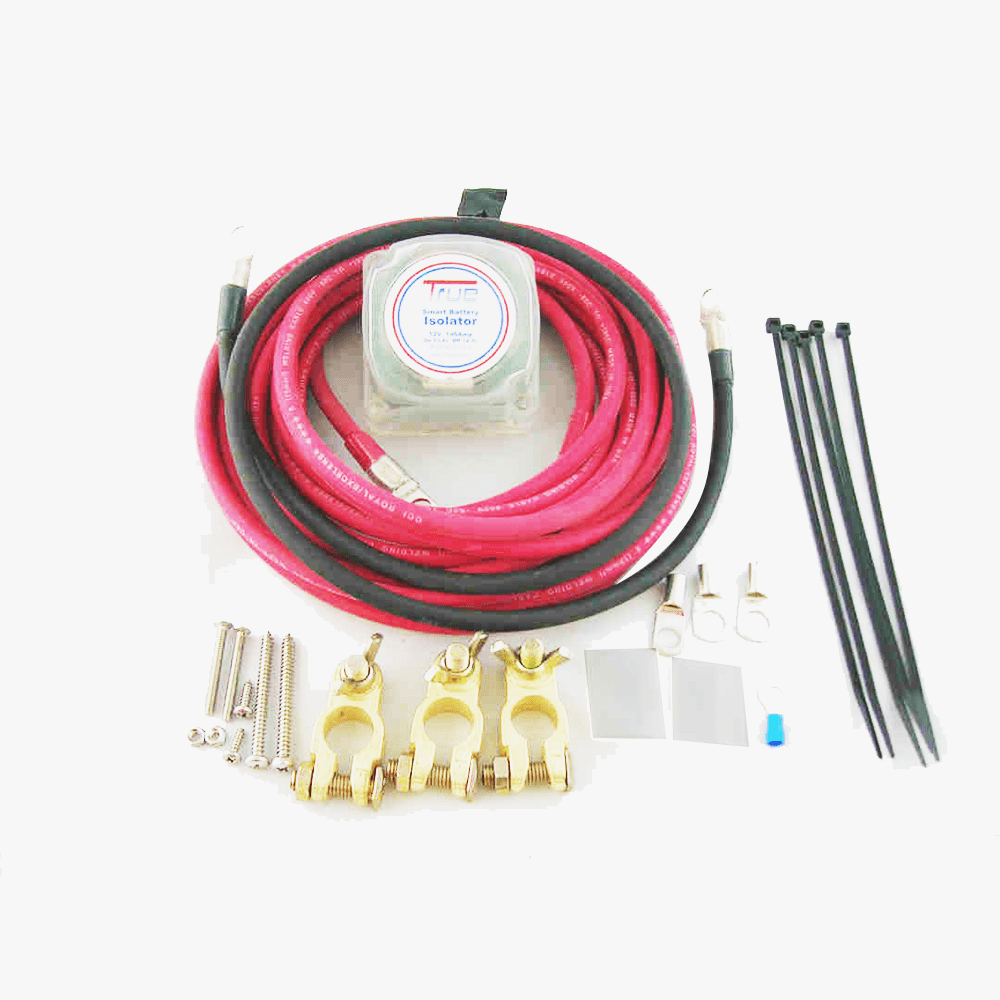Questions send by True customers through local distributors.
- How does it prevent overcharging of the main battery?
This battery isolator technology in no way regulates the AMPS being produced or passed through. That is done by your automotive voltage regulator and alternator or stator. Since this technology is “SMART” it will connect and allow the charging amps to be shared with the second battery once the charging amperage filling the primary battery brings it to a level of 13.4 volts. If the auxiliary battery is low it will accept the majority of charging amps made available from the charging system. Overcharging is regulated by your voltage regulator and alternator. - How does this product work?
this product functions like an automated switch, like a light switch on a wall, but it senses the voltage of the battery 1 line, and when the alternator is outputing 13.8v and up, the switch closes and connects battery 2. When the alternator isn’t outputting power because the engine is off, the voltage of battery 1 is 12.9v or less, the switch opens and the secondary battery is disconnected. - Is the male connector on the underside for a remote shutoff, or what? How should it be wired?
The connectors should be as follows.
– Black ground wire
– Lead-in from the main battery
– Lead out to secondary battery to be charged.
You could likely put in an in-line switch if that’s something you want, but if it is working as it should, it will automatically disconnect.
The spade connector on the back of the isolator is for specialized applications where an isolator disconnect override is needed. When power is applied to the spade connector the isolator will disengage. You will not have anything connected to this spade connector for most applications - Can I charge both my house & engine batteries off of solar panels with this & then both batteries also charge off the alternator when I’m driving?
The isolator will open once the first battery reaches 13.2 volts. It does not matter where the initial charge to the first battery comes from. In my Motorhome, the cranking battery will charge once the auxiliary battery reaches 13.2 while plugged into 110 ac current. The auxiliary battery will charge once the cranking battery reaches 13.2 also. It is a very simple installation and works very dependably. I see no reason that a charge from a solar panel would react any differently.
YES and yes it will charge either direction according to the voltages. If you are driving and the charging voltage is 14.2 from the alter. and 14.4 from the solar will charge. if the solar voltage is 14.0 the alternator will charge - How durable are these smart battery isolators? 1-2-3 yrs? More?
My co-worker put one of these Smart Battery Isolators in his full-size Van that he modified for RV usage. He highly recommended it to me as I am in the process of building my electrical system. I have included it into my schematics and I have it wired in on my control board along with my Solar panel controller and fuse box. I am not finished with my system yet, but my co-worker has had his fully operational for about 2 years with no problems at all. He said it works perfectly. I’ve known him for over 20 years and he recommended it to me, I trust him as he is an electrical/mechanical engineer.
I have had mine in a Polaris 1000 Razr for about 3 years with no issues - I recently installed your product on my utv. just wondering is there any benefit to connecting certain accessories to the 2nd battery. or should we keep everything on the main
All accessories beside factory installed accessories should be connected to the secondary battery. - What does the blue light mean and why does it stay on alot when I am hooked to a trickle charger?
When using a charger on your main battery the isolator will light up due to the second battery being fully charged and will do the same when connected to the secondary if your main is fully charged.Also always place the trickle charger to secondary battery not the main battery to allow pass through charging.


